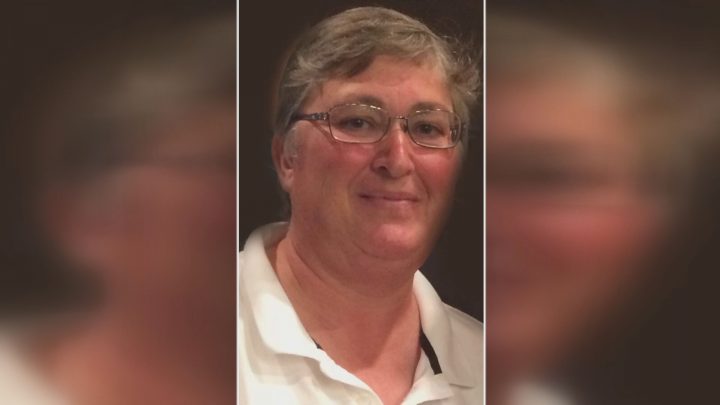Greg Fertuck had plans to fly to Alberta in June 2019, but just as he was about to board a plane with a coworker, they were called to a luxury hotel in downtown Saskatoon, a first-degree murder trial has heard.

The orders came on June 21, amid what appeared to be heightened police attention on Fertuck, who is now 68. His estranged wife, Sheree Fertuck, had been missing since Dec. 7, 2015 and the man was the prime suspect in her disappearance.
When Greg and the coworker, an undercover officer, arrived at the hotel, they entered a suite. Inside, there were more undercover officers who Fertuck knew. Each had a long-established business role: the crooked police officer, the cleanup expert, Fertuck’s supervisor and the crime boss.
In a “lengthy conversation,” Fertuck told the crime boss that he killed Sheree and disposed of her body, according to the cover person for the Mr. Big sting. Fertuck mentioned a tarp, a pair of gloves, a .22 calibre rifle magazine and boots used during the offence, the cover person testified.
Fertuck said he got rid of the rifle somewhere in the Biggar, Sask., area., about 100 kilometres west of Saskatoon, according to the testifying officer.
The witness and all undercover officers involved in the case can’t be identified due to a publication ban.
On the same day as his admission to the crime boss, Fertuck led the undercover officers to Sheree’s last-known whereabouts at the gravel pit near Kenaston, Sask., about 85 kilometres south of Saskatoon.
The accused then led officers to a rural area to begin searching for Sheree’s body. They spent parts of three days looking for it.
To this day, Sheree’s remains have never been found.

Get daily National news
An audio and video recording of the conversation is expected to be played later on during the trial.
Court has heard Fertuck was the target of 130 designed interactions, or “scenarios,” with undercover officers. The events took place in Saskatchewan, Alberta and British Columbia, spanning almost a year.
The RCMP-crafted, fake business had two sides: a legal vehicle hauling operation and a criminal organization moving contraband like unethically sourced diamonds and illegal cigarettes.
The scenarios were tailored specifically to Fertuck’s interests, abilities and experiences. For instance, one undercover officer was involved in a domestic dispute that mirrored the accused’s violent history with Sheree.
When Fertuck fell and hit his head five months into the sting, it threw the future of the operation into question, according to the cover person.
On New Year’s Day in January 2019, Fertuck slipped on some ice outside a pub on Diefenbaker Drive in Saskatoon. He was treated for two hematomas on his brain before checking himself out of hospital, the cover person said.
“Is he going to be well enough to continue (in the sting)?” the officer recalled wondering.
- 4 dead, 17 wounded after shooting in entertainment district in Birmingham, Alabama
- PGA goods worth $25K allegedly stolen from hotel ahead of Presidents Cup
- Kenneth Law responsible for ‘luring’ Ontario teen into suicide death, parents allege
- Officials offer US$100K for info on Alabama shooting that killed 4
By Jan. 8, 2019, Fertuck’s condition had taken a turn for the worse. His common-law partner Doris Larocque called members of the organization when she couldn’t get Fertuck off the ground, he’d soiled himself and laid there for “upwards of three or four days,” the witness said.
Despite Fertuck’s refusal to go to the hospital, undercover police called him an ambulance.
“There was no other option. His health was probably going to deteriorate worse,” the cover person said.
He spent the next month in hospital, receiving treatment for the bruising on his brain and a blood clot. His condition continually improved, with some undercover officers saying he’d never looked better physically.
Before Fertuck went back to work on March 6, 2019, undercover police assured him he could only return if he wanted to and was medically fit to do so.
He also quit drinking. Officers adjusted scenarios to encourage his sobriety to continue.
Even with the “vast improvement” in his physical condition, officers noticed deficits in Fertuck’s short-term memory.
Scenarios were altered to re-introduce themes of the criminal organization, like the importance of honesty and members being allowed to leave without consequence.
In one scenario, officers gave Fertuck a locker number to remember. He was able to recall the figure weeks later, court heard.
The cover person said it was unclear whether the memory loss was due to the head injury or Fertuck’s history of heavy drinking.
The cover person testified that prior to the head injury, he anticipated the operation to last five or six months. The injury extended the timeline to roughly 11 months.
One undercover officer struck a friendship with Fertuck’s common-law partner and met with her for lunch multiple times. On March 29, 2019, Larocque told the officer Fertuck was continuing to improve, including with his memory. She also said he was enjoying work.
Police charged Greg Fertuck with first-degree murder and offering an indignity to a body shortly after his June 2019 confession. He has pleaded not guilty to both charges.
Mr. Big stings are controversial in Canada and outright illegal in the United States. Critics say the method entraps suspects into giving false confessions.
Over the course of five weeks of testimony, the Crown has entered all of its evidence in a series of voir dire, or admissibility, hearings. Justice Richard Danyliuk has not ruled on whether or not any of it will be applied to the trial proper.
The proceedings are scheduled to last eight weeks.










Comments